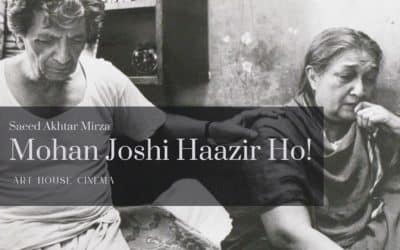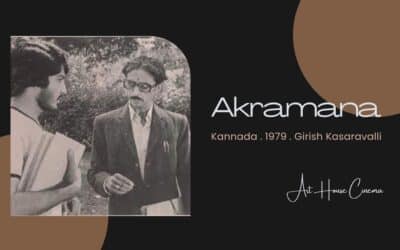Mirch Masala is a 1987 Hindi film directed by Ketan Mehta and has Smita Patil, Naseeruddin Shah, Om Puri and Deepti Naval in prominent roles. The film depicts the resistance of common folks against a powerful tyrant.
Cast
- Subedar ————————————– Naseeruddin Shah
- Sonbai —————————————- Smita Patil
- Mukhi —————————————- Suresh Oberoi
- Masterji ————————————– Benjamin Gilani
- Mukhi’s Brother —————————- Mohan Gokhale
- Saraswati ———————————— Dipti Nawal
- Abu Miyan ———————————- Om Puri
- Pandit —————————————- Harish Patel
- Factory worker —————————– Deena Pathak
- Factory worker —————————– Supriya Pathak
- Factory worker —————————– Ratna Pathak
Story
Mirch Masala is set in the colonial era, when India is still under the British rule, in a village in Western India, presumably Gujarat. An arrogant Subedar camps on the outskirts of the village along with a platoon of cavalry soldiers, to collect tax from the villagers. The lecherous subedar eyes the women of the village and lusts Sonbai, a strong-willed woman whose husband has gone to the city to earn the living. Subedar tries to trap Sonbai but she rattles him with her bold defiance.
Back in the village, the subservient Mukhi is ready to do anything to please the Subedar, while the villagers groan under the burden of heavy taxes. In addition to the taxes, the villagers are also supposed to keep the tyrant happy and supply him and his men with food, comforts and even women. In a way, Mukhi represents the general male psyche of the village and the nation at large- weak, useless and haughty at the same time. Women are generally reduced to shadows in the background and Mukhi’s wife has to face his ire when she tries to send her daughter to school. The only literate person in the village is the schoolmaster, a Gandhian who is hoping to bring a positive change in the village.
There is a chilly factory in the village where Sonbai and many other women go to work. The factory is guarded by Abu Mian, an old chowkidar widely respected among the women for his pious ways.
The general calm of the village is broken one day when the Subedar boldly professes his desire to Sonbai. Sonbai slaps him and manages to escape from there and hide inside the factory. An enraged Subedar gathers his men and arrives at the factory to get Sonbai, while terrified villagers watch on. Abu Mian bolts the gates of the factory and refuses to comply with the demands of the Seth, Mukhi, or Subedar to hand over Sonbai to them. Even the Panchayat is not able to make his open the gates of the factory. The women inside the factory are initially furious over Sonbai for bringing this ill fate over them; but as the embargo goes on, they develop compassion for Sonbai and Abu Mian.
Seeing that Abu Mian will not submit to his command, Subedar orders his men to storm the factory and take Sonbai by force. Abu Mian stands alone guarding the gate of the factory and dies defending it. With the gates of the factory broken open and the guard dead, Subedar goes inside alone to grab Sonbai. At this juncture, the women inside the factory mount a sudden defence. They attack him with chilly powder, waves upon waves as he is rendered blind and crying in pain. The film ends in a frame where Sonbai is standing with a sickle in hand and eyes filled with a steely resolve, while the Subedar is writhing on the ground, screaming in agony.
Commentary
Mirch Masala is an interesting film, a matured form of New Line Cinema movement of which the director and lead actors of the film were a product. Before making this film, Ketan Mehta had made Bavani Bhavai (1980), trying to portray the psyche of an oppressed people and grass-roots resistance. Mirch Masala is a step further, and clearly shows the maturity its maker attained in that 4-year gap. The village community, instead of upholding its honour, decides to turn a blind eye towards the forces of oppression. Finally, when the defiance comes, it comes from the most unexpected sections; the ‘fringe elements’ the once who decide to raise the flag of rebellion.
The film was released after the death of Smita Patil and remains one of her most important films. The temperament and vivacity of Sonbai could not have been brought by anyone else in such a perfect manner. The ease with which she manages to be supremely sensual and fiercely rebellious at the same time is a treat to the eyes and senses. The last scene in which, when the Subedar has been overwhelmed by the chilly powder attack, she stands there with a sickle in her hand, her eyes blazing with a fierceness very symbolic of Goddess Kali.
Reference
- Wikipedia – Mirch Masala
- Stardom: Industry of Desire (Christine Gledhill) ISBN 0-203-40042-9







